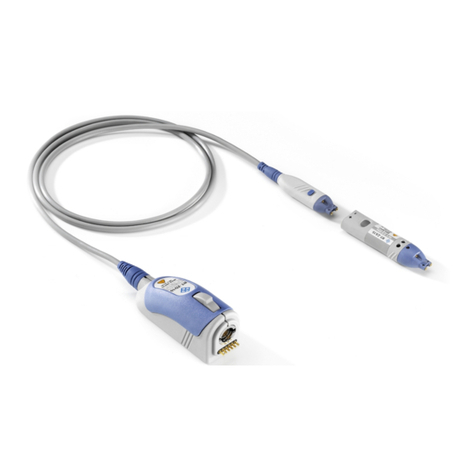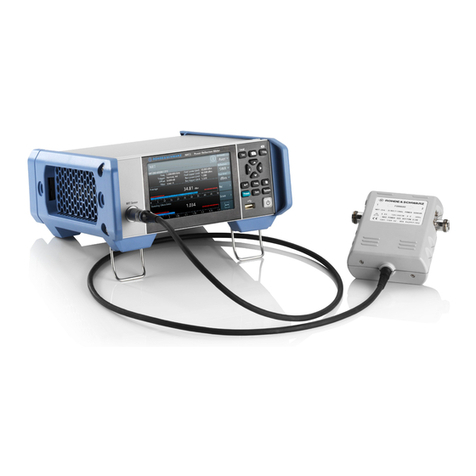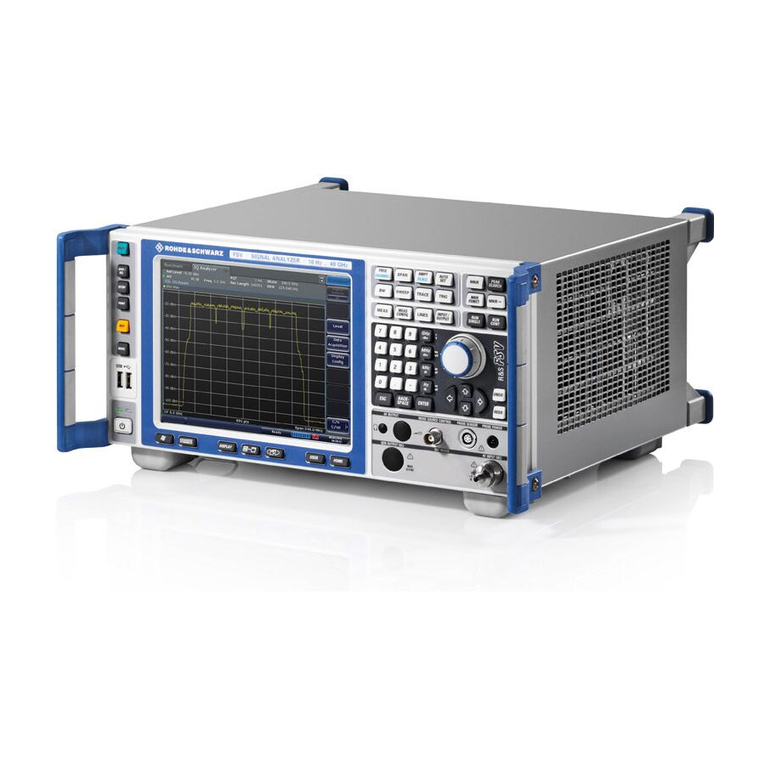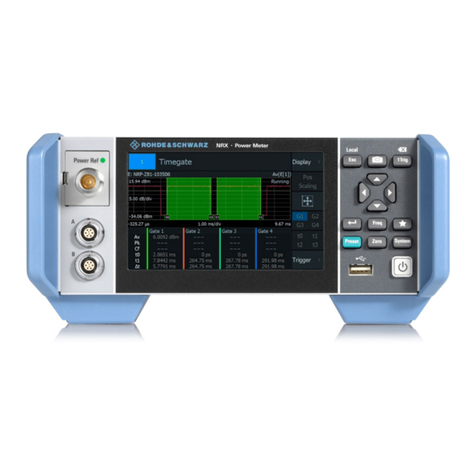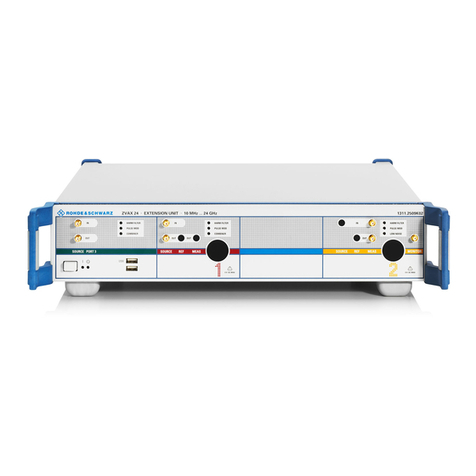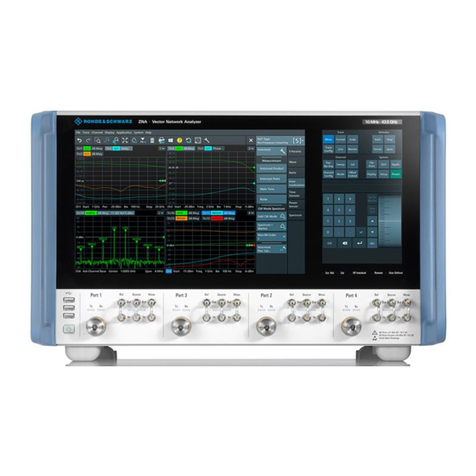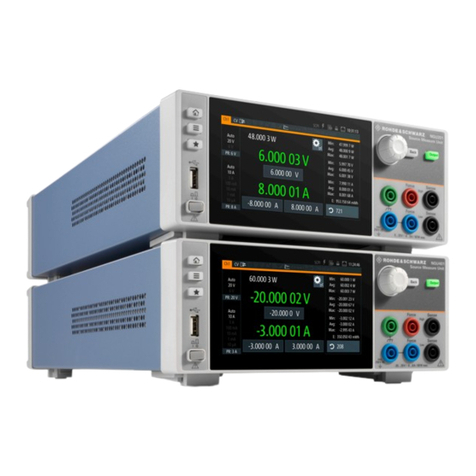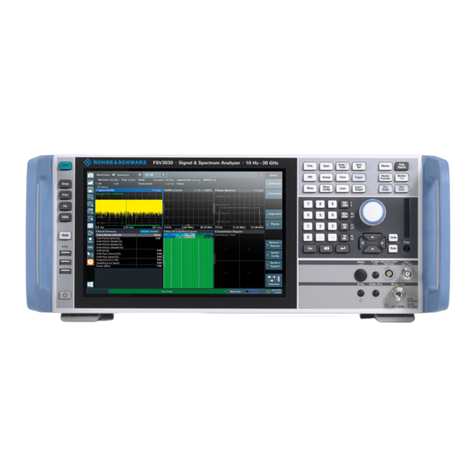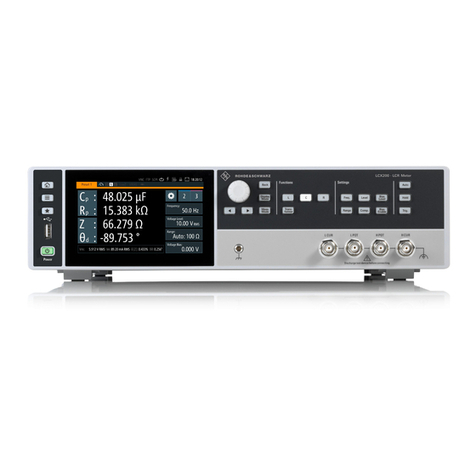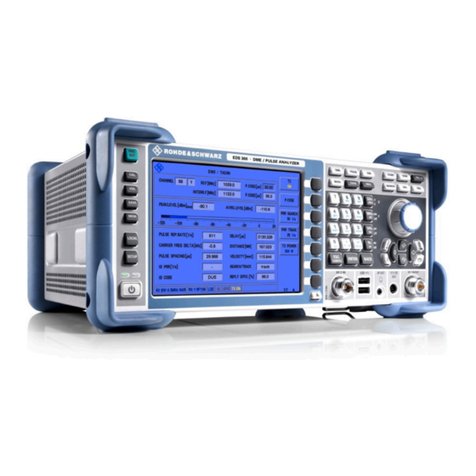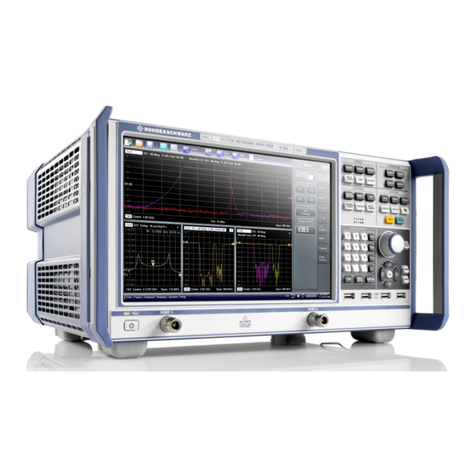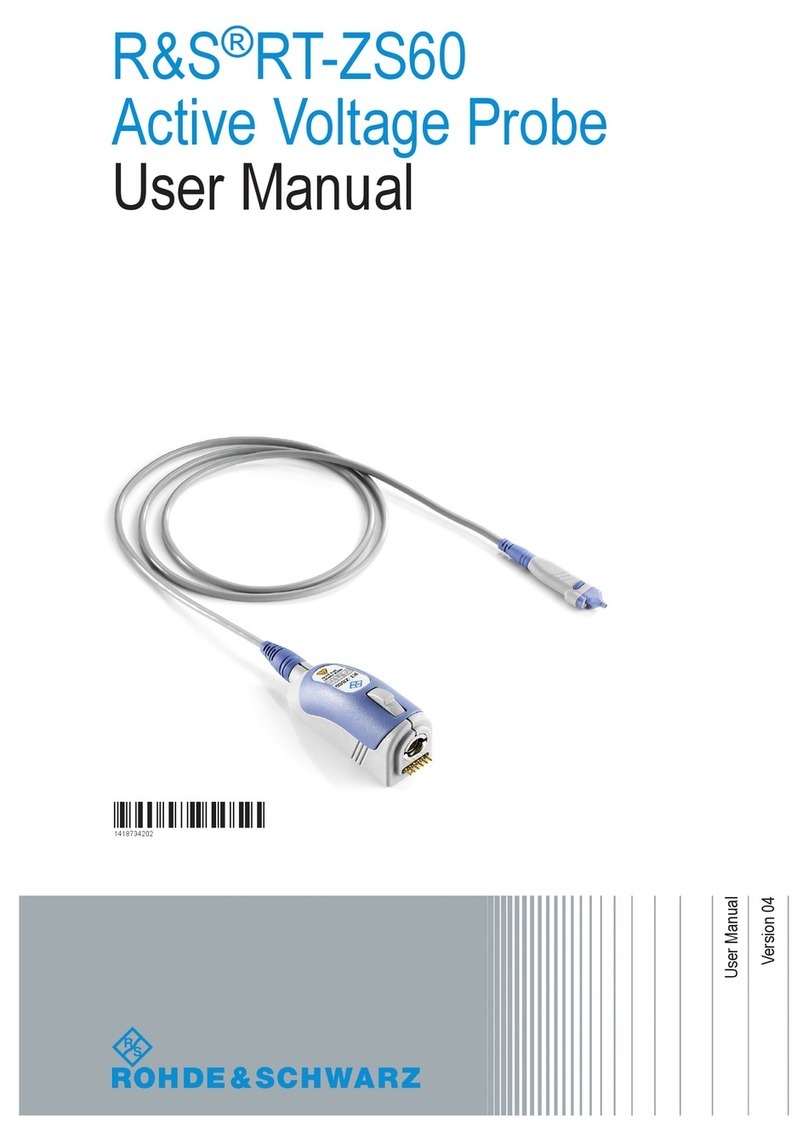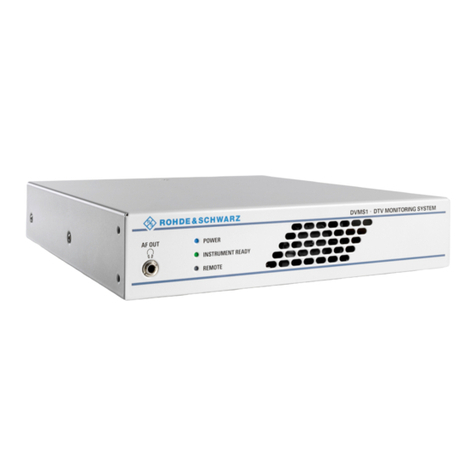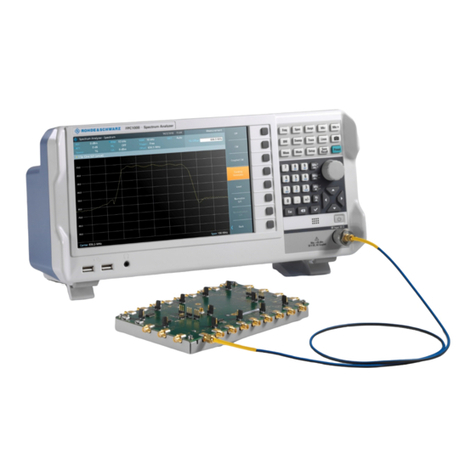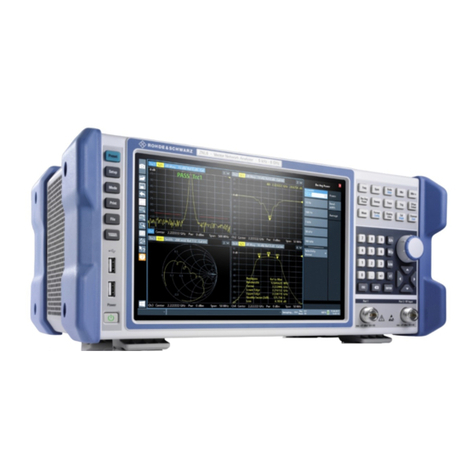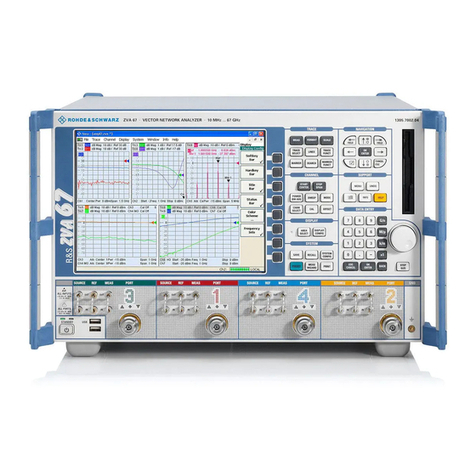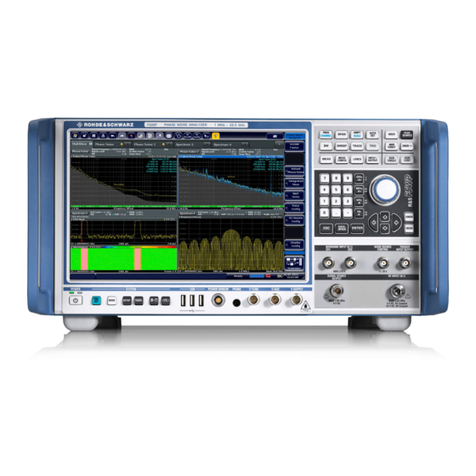
R&S FS300 Table of Contents
Operating manual, 2/2006 0-7 E-1147.2759.00
6.2.1.1 Entering the Center Frequency and the Span............................................. 6-77
6.2.1.2 Entering the Start Frequency and the Stop Frequency............................... 6-78
6.2.1.3 Entering the Step Width of the Center Frequency ...................................... 6-79
6.2.1.3.1 Setting the Step Size ................................................................................ 6-80
6.2.1.4 Frequency-Axis Display Modes................................................................... 6-81
6.2.1.4.1 Displaying the Whole Frequency Range .................................................. 6-82
6.2.1.4.2 Switching over to the ZERO SPAN........................................................... 6-83
6.2.1.4.3 ZOOM Functions....................................................................................... 6-84
6.2.1.5 Signal Tracking............................................................................................ 6-85
6.2.1.5.1 Activating Signal Tracking ........................................................................ 6-86
6.2.2 Setting the Level Axis and the RF Input (AMPT Menu)............................................... 6-87
6.2.2.1 Entering the Reference Level...................................................................... 6-88
6.2.2.2 Entering a Level Offset................................................................................ 6-89
6.2.2.3 Selecting the Level Display Range ............................................................. 6-90
6.2.2.4 Selecting the Level Display Unit.................................................................. 6-91
6.2.2.5 Setting the RF Input Attenuation Manually.................................................. 6-93
6.2.2.6 Setting the RF Input Attenuation Automatically........................................... 6-94
6.2.2.7 Selecting the Setting High Sensitivity.......................................................... 6-96
6.2.3 Signal Analysis using Marker Functions (MKR Menu) ................................................ 6-97
6.2.3.1 Activating Marker 1...................................................................................... 6-98
6.2.3.1.1 Reading off Measured Values with Marker 1............................................ 6-99
6.2.3.1.2 Frequency Measurements using the Frequency Counter ...................... 6-101
6.2.3.2 Activating Marker 2.................................................................................... 6-102
6.2.3.2.1 Reading off Measured Values with Marker 2.......................................... 6-103
6.2.3.2.2 Reading off Level Differences................................................................. 6-104
6.2.3.3 Accepting Marker Values as Settings ....................................................... 6-105
6.2.3.3.1 Moving Trace Sections in the Measurement Diagram ........................... 6-106
6.2.3.3.2 Setting the Step Size to the Marker Frequency...................................... 6-108
6.2.3.4 Marker Measurement Functions ............................................................... 6-109
6.2.3.4.1 Measuring the Noise Power Density ...................................................... 6-110
6.2.3.4.2 Measuring the Filter or Signal Bandwidth............................................... 6-111
6.2.3.5 Activating a Display Line ........................................................................... 6-113
6.2.3.6 Setting the Search Criterion of Functions NEXT PEAK LEFT/RIGHT ...... 6-114
6.2.3.6.1 Entering the Peak Excursion .................................................................. 6-115
6.2.3.7 Setting Reference Points for Level-Difference Measurements................. 6-117
6.2.3.7.1 Manual Entry of Reference Points .......................................................... 6-118
6.2.4 Setting the Bandwidths and the Sweep Time (BW/SWEEP Menu) .......................... 6-121
6.2.4.1 Setting the Resolution Bandwidth ............................................................. 6-122
6.2.4.2 Setting the Video Bandwidth ..................................................................... 6-123
6.2.4.3 RBW, VBW and SPAN Coupling Ratio ..................................................... 6-124
6.2.4.3.1 Changing the Coupling Ratio RBW/VBW ............................................... 6-125
6.2.4.3.2 Switching Over the Coupling RBW/SPAN to Low Noise ........................ 6-126
6.2.4.4 Setting the Sweep ..................................................................................... 6-127
6.2.4.4.1 Selecting the Frequency Sweep ............................................................. 6-128
6.2.4.4.2 Setting the Sweep Time.......................................................................... 6-129
6.2.5 Measured-Value Display (TRACE Menu).................................................................. 6-130
6.2.5.1 Selecting the Active Trace......................................................................... 6-131
6.2.5.1.1 Activating Traces .................................................................................... 6-132
6.2.5.2 Displaying the Active Trace....................................................................... 6-134
6.2.5.3 Trace Difference Function ......................................................................... 6-137
6.2.5.3.1 Activating the Trace Difference Function................................................ 6-138












